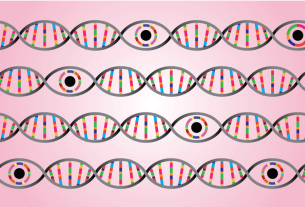Video footage captured by police drones sent in response to 911 calls cannot be kept entirely secret from the public, a California appellate court ruled last week.
The decision by the California Court of Appeal for the Fourth District came after a journalist sought access to videos created by Chula Vista Police Department’s “Drones as First Responders” (DFR) program. The police department is the first law enforcement agency in the country to use drones to respond to emergency calls, and several other agencies across the U.S. have since adopted similar models.
After the journalist, Arturo Castañares of La Prensa, sued, the trial court ruled that Chula Vista police could withhold all footage because the videos were exempt from disclosure as law enforcement investigatory records under the California Public Records Act. Castañares appealed.
EFF, along with the First Amendment Coalition and the Reporters Committee for Freedom of the Press, filed a friend-of-the-court brief in support of Castañares, arguing that categorically excluding all drone footage from public disclosure could have troubling consequences on the public’s ability to understand and oversee the police drone program.
Drones, also called unmanned aerial vehicles (UAVs) or unmanned aerial systems (UAS), are relatively inexpensive devices that police use to remotely surveil areas. Historically, law enforcement have used small systems, such as quadrotors, for situational awareness during emergency situations, for capturing crime scene footage, or for monitoring public gatherings, such as parades and protests. DFR programs represent a fundamental change in strategy, with police responding to a much, much larger number of situations with drones, resulting in pervasive, if not persistent surveillance of communities.
Because drones raise distinct privacy and free expression concerns, foreclosing public access to their footage would make it difficult to assess whether police are following their own rules about when and whether they record sensitive places, such as people’s homes or public protests.
The appellate court agreed that drone footage is not categorically exempt from public disclosure. In reversing the trial court’s decision, the California Court of Appeal ruled that although some 911 calls are likely part of law enforcement investigation or at least are used to determine whether a crime occurred, not all 911 calls involve crimes.
“For example, a 911 call about a mountain lion roaming a neighborhood, a water leak, or a stranded motorist on the freeway could warrant the use of a drone but do not suggest a crime might have been committed or is in the process of being committed,” the court wrote.
Because it’s possible that some of Chula Vista’s drone footage involves scenarios in which no crime is committed or suspected, the police department cannot categorically withhold every moment of video footage from the public.
The appellate court sent the case back to the trial court and ordered it and the police department to take a more nuanced approach to determine whether the underlying call for service was a crime or was an initial investigation into a potential crime.
“The drone video footage should not be treated as a monolith, but rather, it can be divided into separate parts corresponding to each specific call,” the court wrote. “Then each distinct video can be evaluated under the CPRA in relation to the call triggering the drone dispatch.”
This victory sends a message to other agencies in California adopting copycat programs, such as the Beverly Hills Police Department, Irvine Police Department, and Fremont Police Department, that they can’t abuse public records laws to shield every second of drone footage from public scrutiny.



